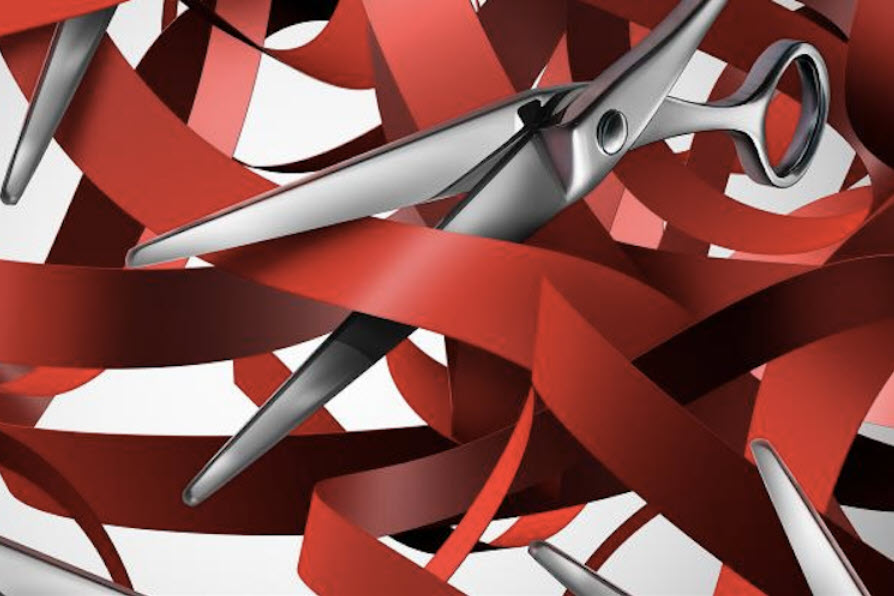Why Red Tape Stifles Innovation and What We Can Do About It
I think I was born practical. As a result I really hate wasting time, money, or energy.
No surprise then that I have very little tolerance for red tape – meaning complex and time-consuming forms and procedures.

While I no longer work for government or a bureaucracy, a number of recent encounters were a reminder of just how darn good they can be in terms of generating it. And the thing is, every centimeter of that red tape was generated by government with the very best of intentions. What makes it even worse is that the red tape keeps increasing because when a problem is identified, the solution always seems to be the addition of a new report, system, or policy instead of taking something away.
I also know it’s not fair to blame those who work for government. I work with a number of government ministries filled with stellar people. Unfortunately, they are too often trapped in bad systems. These include systems for controlling finances, human resources, purchasing, and communication. These systems make it hard for public servants to do what we pay them to do – serve the public.
So if everyone had good intentions, how on earth did it get this way?
Bureaucracies evolved as we moved from an agricultural-based society to the manufacturing era beginning in the early 1900’s. As public services increased, we built large, top-down, centralized bureaucracies modeled after our sister private corporations of the day.
In order to ensure standardization and accountability, tasks were generally broken into simple parts and assigned to different employees or departments along with specific policies and procedures. The assumption was that we couldn’t trust employees to make decisions so everything had to be spelled out. Not only that, we then we needed to check up on them to make sure they adhered to the rules. Deviations often meant more rules and more audits until we’ve now gotten to the point where there is so much red tape that the smallest action takes much too long and costs too much.
While this emphasis on standardization and a top-down chain of command had its time and place, it simply isn’t a good fit for today’s rapidly changing, volatile and often uncertain world.
It especially isn’t conducive to innovation. To be fair, some government employees get very creative in terms of circumventing or making the systems work for them, but too often employees learn not to trust their common sense or to rock the boat. And, since the very nature of innovation requires a departure from standard operating policy and procedures, only the very tenacious will put their innovative ideas into practice given the constraints they face. The rest understand their job is to make sure that every dollar is spent in the budget category in the year for which it was appropriated, that every individual hired or promoted is consistent within dictated guidelines, and every purchase is bought through competitive bidding.
So what can we do about it?
First, we need to emphasize and celebrate more entrepreneurship in government by shifting from being systems where employees are accountable for following rules to instead becoming systems in which they are accountable for achieving results. This will mean giving them more autonomy over their budget, human resources, communications, and purchasing systems. Instead of punishing mistakes, the emphasis will be placed on innovation and preventing problems.
Second, we need to ensure customers are put first by listening and responding to meet their needs.
Third, we can empower employees to get results by decentralizing authority. We need to trust those on the front lines to make more of their own decisions, solve their problems, and be accountable for their results.
Lastly, we need to work at making government better and less obsolete by being brave about examining all departments and functions to eliminate duplication and make tough decisions about whether or not the private sector or non-profit organizations might be better suited to getting the job done.
None of this will be easy. It will require government ministries and departments with clear and meaningful visions and directions, ensuring more flexible budgets tied to outcomes, a commitment to more steering and less rowing, and the trust to delegate and empower more.
Thousands of public servants across the country possess extensive education, a wealth of experience, exceptional but too often untapped competencies, and a spirit of dedication to serving the public good. Let’s make sure they have a system that doesn’t get in their way.
Posted on 06-22-21
Next entry: Moving Beyond COVID-19 One Bite at a Time
Previous entry: What? There’s a Fourth Sector?

 Brenda Herchmer is the owner of Grassroots Enterprises, a community development consulting company.
Brenda Herchmer is the owner of Grassroots Enterprises, a community development consulting company.